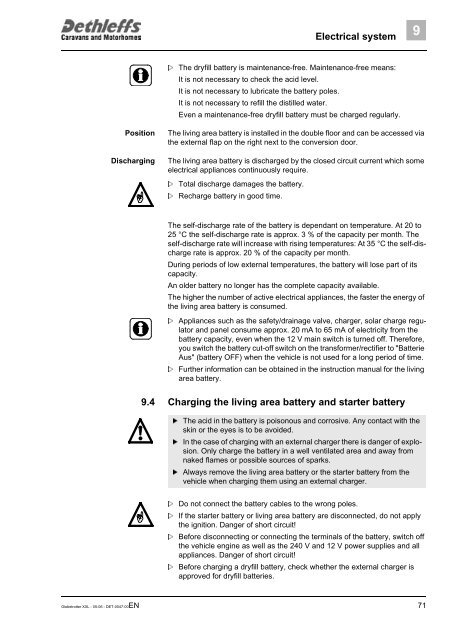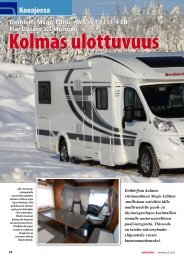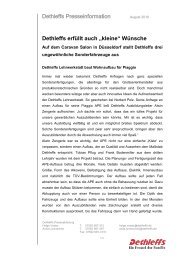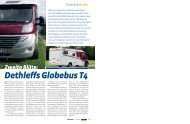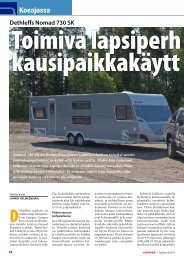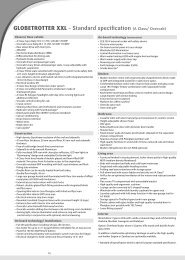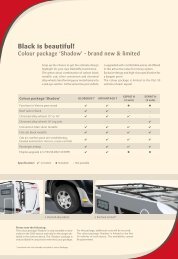User Manual XXL Globetrotter 2006 - Dethleffs
User Manual XXL Globetrotter 2006 - Dethleffs
User Manual XXL Globetrotter 2006 - Dethleffs
You also want an ePaper? Increase the reach of your titles
YUMPU automatically turns print PDFs into web optimized ePapers that Google loves.
Electrical system 9<br />
The dryfill battery is maintenance-free. Maintenance-free means:<br />
<br />
It is not necessary to check the acid level.<br />
It is not necessary to lubricate the battery poles.<br />
It is not necessary to refill the distilled water.<br />
Even a maintenance-free dryfill battery must be charged regularly.<br />
Position<br />
Discharging<br />
The living area battery is installed in the double floor and can be accessed via<br />
the external flap on the right next to the conversion door.<br />
The living area battery is discharged by the closed circuit current which some<br />
electrical appliances continuously require.<br />
Total discharge damages the battery.<br />
<br />
Recharge battery in good time.<br />
<br />
The self-discharge rate of the battery is dependant on temperature. At 20 to<br />
25 °C the self-discharge rate is approx. 3 % of the capacity per month. The<br />
self-discharge rate will increase with rising temperatures: At 35 °C the self-discharge<br />
rate is approx. 20 % of the capacity per month.<br />
During periods of low external temperatures, the battery will lose part of its<br />
capacity.<br />
An older battery no longer has the complete capacity available.<br />
The higher the number of active electrical appliances, the faster the energy of<br />
the living area battery is consumed.<br />
Appliances such as the safety/drainage valve, charger, solar charge regulator<br />
and panel consume approx. 20 mA to 65 mA of electricity from the<br />
<br />
battery capacity, even when the 12 V main switch is turned off. Therefore,<br />
you switch the battery cut-off switch on the transformer/rectifier to "Batterie<br />
Aus" (battery OFF) when the vehicle is not used for a long period of time.<br />
Further information can be obtained in the instruction manual for the living<br />
<br />
area battery.<br />
9.4 Charging the living area battery and starter battery<br />
The acid in the battery is poisonous and corrosive. Any contact with the<br />
<br />
skin or the eyes is to be avoided.<br />
In the case of charging with an external charger there is danger of explosion.<br />
Only charge the battery in a well ventilated area and away from<br />
<br />
naked flames or possible sources of sparks.<br />
Always remove the living area battery or the starter battery from the<br />
<br />
vehicle when charging them using an external charger.<br />
Do not connect the battery cables to the wrong poles.<br />
<br />
If the starter battery or living area battery are disconnected, do not apply<br />
<br />
the ignition. Danger of short circuit!<br />
Before disconnecting or connecting the terminals of the battery, switch off<br />
<br />
the vehicle engine as well as the 240 V and 12 V power supplies and all<br />
appliances. Danger of short circuit!<br />
Before charging a dryfill battery, check whether the external charger is<br />
<br />
approved for dryfill batteries.<br />
<strong>Globetrotter</strong> <strong>XXL</strong> - 05-06 - DET-0047-00EN<br />
71


